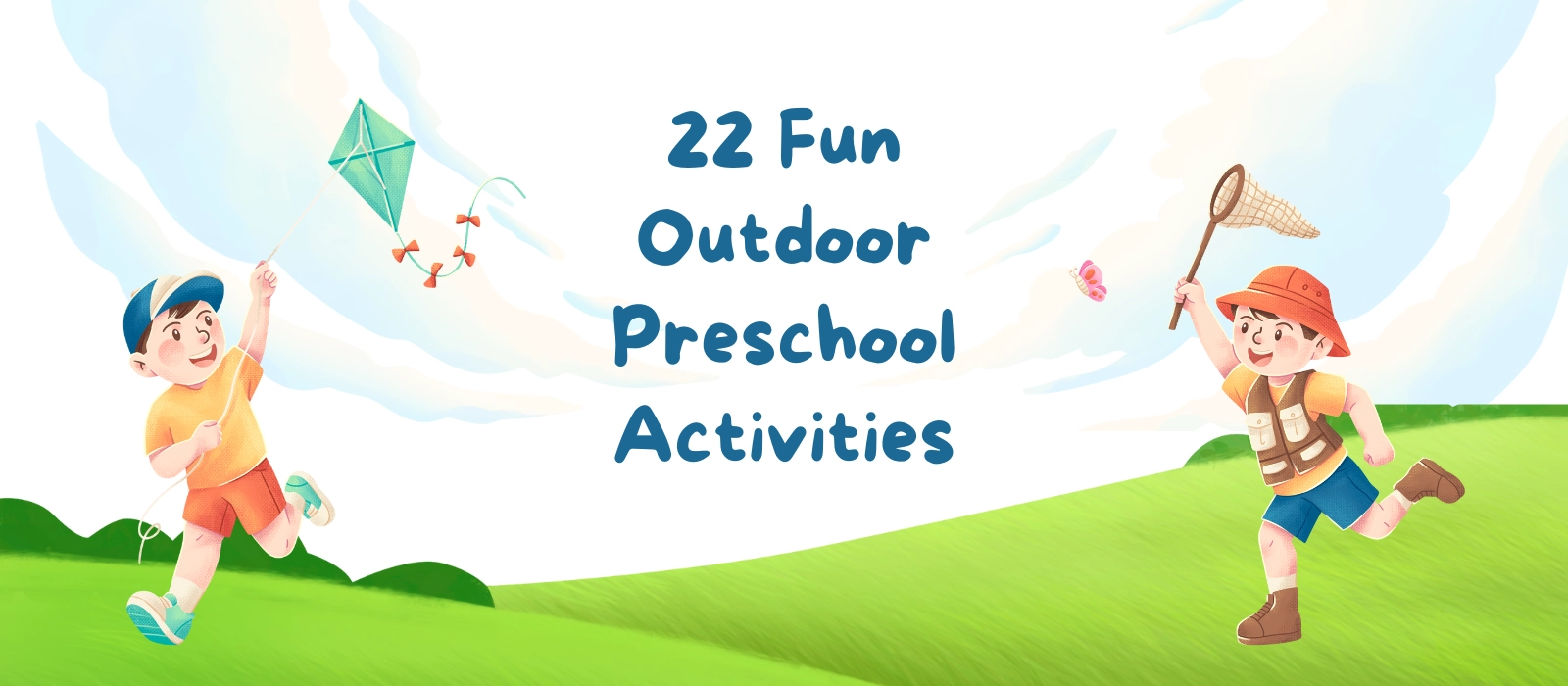Is your preschool classroom too noisy, too still, or just lacking joy? Are the children always restless, uninterested, or struggling to stay focused indoors? Do you constantly feel like they need something more to release their energy, develop naturally, and build better social skills? These aren’t just daily challenges—they’re signs that your program may be missing a key developmental ingredient: outdoor preschool activities.
Outdoor preschool activities are essential for supporting children’s physical, emotional, and intellectual growth. They provide a dynamic learning environment where children can build gross motor skills, develop real-world problem-solving abilities, and form stronger social bonds. The open air stimulates curiosity and improves mental well-being, laying a healthy foundation for lifelong learning.
As the CEO of a leading Chinese preschool furniture supplier, I’ve worked with hundreds of early childhood educators from North America, Europe, and Australia. One thing they all agree on: structured, purposeful outdoor activities aren’t just “nice to have”—they’re absolutely necessary. In this article, I’ll show you 22 practical outdoor activities that are easy to implement, fun for kids, and developmentally impactful.
Why Outdoor Preschool Activities Matter
Boosting Gross and Fine Motor Skills
Outdoor preschool activities play a crucial role in helping children develop essential gross and fine motor skills. Running, jumping, crawling, balancing, and climbing—these are not only sources of joy but critical building blocks of motor coordination. When children are allowed to move freely outdoors, they engage more muscle groups, improve balance, and develop the strength and flexibility needed for tasks like writing, tying shoelaces, or sitting upright at a desk. Simple outdoor games like hopscotch or bean bag toss build hand-eye coordination and agility, laying the physical groundwork for academic readiness.
The uneven terrain and natural challenges of the outdoor world—like walking on grass, hopping over puddles, or climbing a small hill—require children to continuously adjust and refine their movements. This active engagement with their environment creates neural pathways that strengthen both fine and gross motor systems.
Supporting Cognitive and Emotional Growth
Outdoor preschool activities also enhance brain function and emotional regulation. Nature provides a constantly changing landscape that sparks curiosity, stimulates inquiry, and fosters creativity. Unlike rigid indoor spaces, outdoor environments encourage open-ended thinking—children wonder why a leaf changes color, how water flows, or where ants are marching.
From a cognitive standpoint, being outdoors helps reduce stress and mental fatigue. According to numerous studies, children who spend time in nature demonstrate increased attention spans, better memory retention, and higher problem-solving abilities. Emotional resilience is another key benefit. Outdoor environments allow children to take healthy risks, learn through trial and error, and build self-confidence as they overcome physical challenges or navigate group dynamics.
Exposure to sunlight also boosts serotonin production, which plays a vital role in mood regulation. Children who regularly participate in outdoor preschool activities are often calmer, happier, and more emotionally balanced.
Encouraging Social Interaction and Teamwork
The outdoors creates ideal opportunities for social development. Preschoolers naturally come together to explore, share, negotiate rules, and solve problems. Group activities like building a fort, creating a nature collage, or organizing a leaf race require communication, turn-taking, and cooperation.
Outdoor preschool activities remove many of the spatial limitations of indoor classrooms, giving children room to move and interact freely. This openness encourages more peer-to-peer dialogue and teamwork. In many cases, quieter children find it easier to engage socially when in nature-rich settings that feel less structured and more inviting.
For educators, observing children in outdoor play provides insight into their social skills and group dynamics, helping to guide future instruction and social-emotional support. Overall, outdoor play is a catalyst for meaningful social learning that complements academic instruction.
Safety First: Planning Outdoor Preschool Activities
Choosing Safe Spaces and Equipment
Safety begins with the space itself. When selecting an outdoor area for preschool activities, the first priority is ensuring that the environment is free from hazards such as sharp objects, toxic plants, and uneven or slippery surfaces. Fenced-in yards, rubberized flooring, grass lawns, and age-appropriate climbing structures are ideal features to look for.
At XIHA Furniture, we advise preschool owners to invest in outdoor play equipment that meets international safety certifications such as ASTM or EN1176. Every piece of equipment—from a plastic slide to a balance beam—should be made from child-safe, weather-resistant materials. In addition, all items must be inspected regularly for wear and tear. Anchoring equipment firmly and ensuring stable foundations are non-negotiable.
Don’t forget about the importance of clear visibility. Teachers should have unobstructed sightlines across the entire play area. Avoid blind spots caused by large playhouses or improperly placed furniture. Safety also means accessibility—paths should accommodate children of all physical abilities.
Weather Preparation
Weather adds an exciting sensory element to outdoor preschool activities—but it also requires planning. In warmer seasons, children must be protected from sun overexposure. Provide shaded areas, encourage wearing hats, and make water breaks a part of the routine. Surfaces like metal slides or asphalt can become dangerously hot, so test them regularly.
In colder months, don’t underestimate the power of layering. Encourage parents to dress children in weather-appropriate gear such as waterproof boots, gloves, and thermal jackets. Snow-based activities are fantastic for sensory development and gross motor skills, but wet conditions must be managed to prevent slips or frostbite.
Adaptability is key. Always have an alternative plan for high winds, heavy rain, or poor air quality. Create semi-outdoor options, like covered patios or temporary tents, to keep activities going while staying protected.
Remember: outdoor play is not just a summer luxury—it’s a year-round necessity with the right preparation.
Staff Ratios and Supervision Guidelines
Even the best-designed outdoor space becomes unsafe without proper adult supervision. Maintaining the correct staff-to-child ratio ensures that every child receives attention, assistance, and protection when needed. As a general rule, a ratio of 1 adult for every 6 to 8 preschoolers is ideal for outdoor play.
Supervision must be active—not just present. Staff should be engaged, circulating among the children, observing play, and stepping in when guidance or redirection is needed. Assign zones to each adult to guarantee complete visual coverage and prevent clusters of unsupervised children.
It’s also essential to establish clear safety rules with children. Use consistent language and visual signage to communicate boundaries (e.g., no running beyond the fence, only climb with two hands, etc.). These rules should be reviewed before every outdoor session.
Finally, all supervising staff must be trained in basic first aid and emergency response procedures. Having a fully stocked outdoor first aid kit on hand, along with walkie-talkies for staff communication, helps ensure quick responses when incidents occur.
Outdoor preschool activities offer incredible benefits—but only when built on a foundation of safety, foresight, and professional care.
22 Fun Outdoor Preschool Activities
🏃 Gross Motor Outdoor Activities for Preschoolers
Outdoor preschool activities that focus on gross motor skills are essential for building strength, coordination, and confidence in young children. These large-muscle movements support everything from posture and balance to endurance and agility—foundational elements for classroom success.
Here are five highly effective gross motor outdoor preschool activities, now structured with practical implementation details:
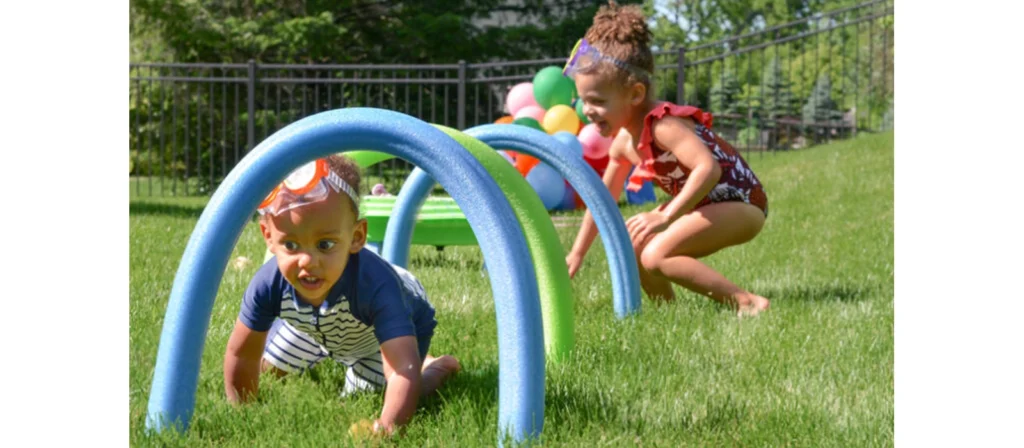
1. Obstacle Course
A classic but endlessly customizable activity. Obstacle courses are dynamic playground adventures that challenge children’s balance, agility, and sequencing skills while offering unstructured fun.
- Ages: 3–6
- Materials: Cones, plastic tunnels, hula hoops, balance beams, pool noodles, tires
- Steps:
- Set up a course in a circular or linear path using available items.
- Create varied tasks: crawl through a tunnel, hop between hoops, balance on a beam.
- Walk the children through the course once, then let them explore in small groups.
- Why It Works: Children develop spatial awareness, body control, and gross motor strength. It also builds perseverance and turn-taking.
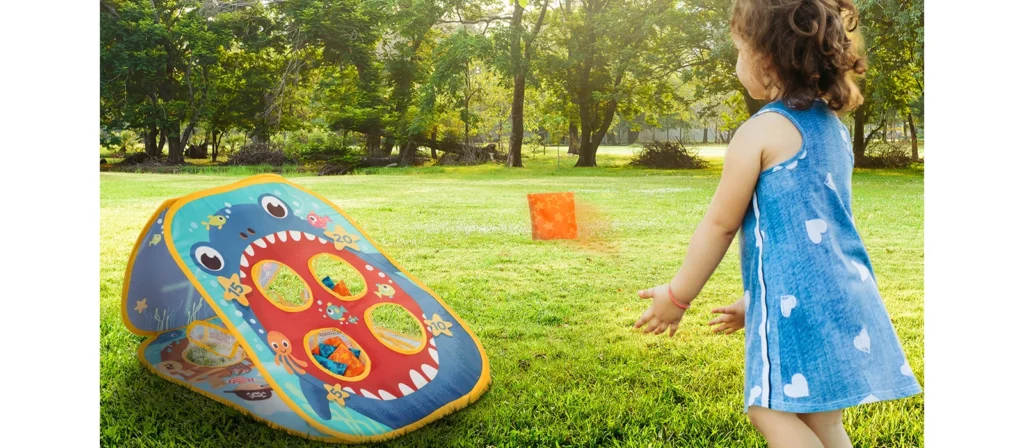
2. Bean Bag Toss
An easy-to-set-up game that targets upper body coordination and focus. Children enjoy the satisfaction of a “splash” or landing in the goal.
- Ages: 3–5
- Materials: Bean bags, plastic buckets, baskets, or floor rings
- Steps:
- Arrange buckets or targets at various distances.
- Demonstrate tossing technique—underhand throw is best for preschoolers.
- Let children toss bean bags and retrieve them in turns.
- Why It Works: Supports hand-eye coordination, arm strength, and introduces simple math (counting scores, comparing distances).
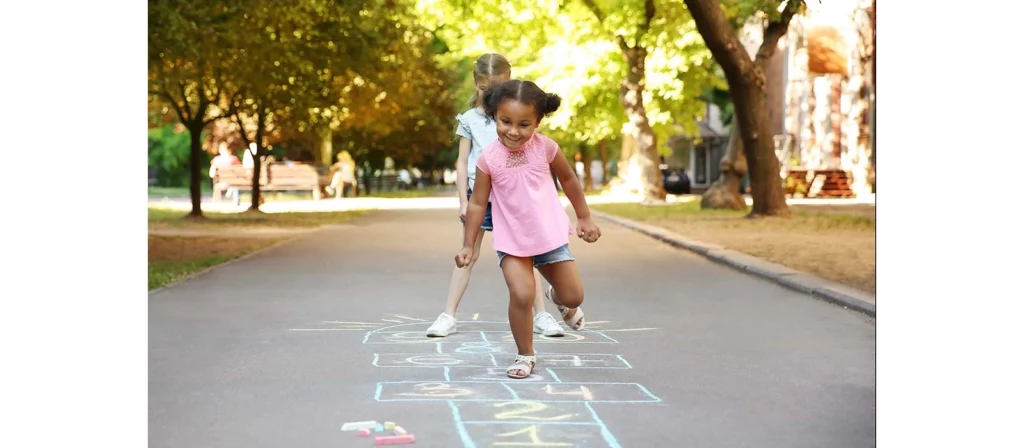
3. Hopscotch
A wonderful mix of movement and number recognition, hopscotch is perfect for individual or small-group play.
- Ages: 4–6
- Materials: Sidewalk chalk, foam number tiles, or rubber hopscotch mats
- Steps:
- Draw a traditional hopscotch grid or place numbered tiles on the ground.
- Children take turns hopping through while counting aloud.
- Add variations: use both feet, toss a stone to mark numbers.
- Why It Works: Enhances balance, memory, coordination, and early numeracy skills.
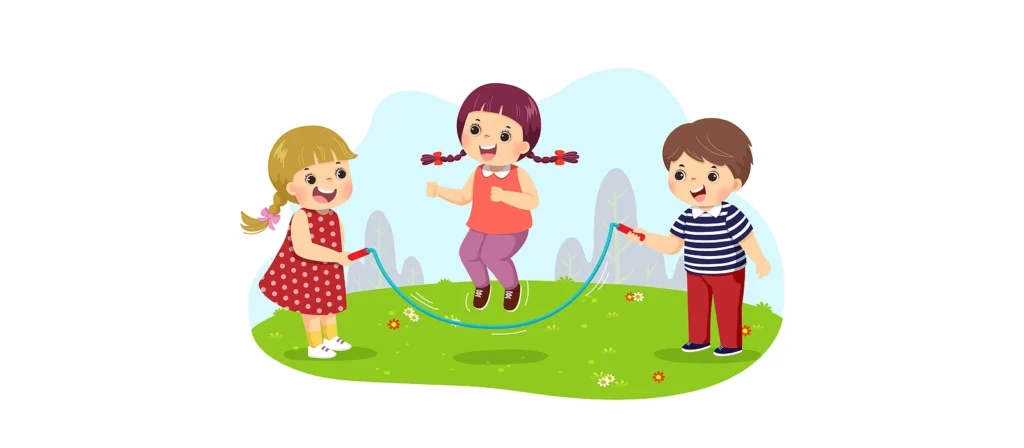
4. Jump Rope Challenge
A high-energy favorite that scales well for different age groups and skill levels.
- Ages: 4–6
- Materials: Short jump ropes for individuals, long rope for group games
- Steps:
- Start with rope waves on the ground for younger children to jump over.
- Gradually introduce jump-in-place or single skips for older preschoolers.
- Use chants or music to add rhythm and motivation.
- Why It Works: Improves cardiovascular health, timing, and bilateral coordination.

5. Giant Chalk Drawing
This creative activity combines movement with artistic expression and fine motor development.
- Ages: 3–6
- Materials: Jumbo sidewalk chalk, smooth outdoor pavement or chalkboard paint wall
- Steps:
- Provide children with large chalk sticks in various colors.
- Invite them to draw shapes, animals, or scenes. Encourage full-body motion (squatting, stretching).
- Create group murals or themed prompts like “under the sea”.
- Why It Works: Builds arm and shoulder strength, creativity, spatial awareness, and pencil-grip pre-skills.
Each of these activities creates memorable outdoor learning experiences that align with developmental goals—and best of all, children love them.
📚 Educational Outdoor Activities for Preschoolers
Educational outdoor preschool activities are an excellent way to blend academic readiness with exploration and sensory-rich experiences. Nature becomes a living classroom where math, literacy, science, and storytelling come alive. These five activities encourage curiosity while building foundational learning skills.
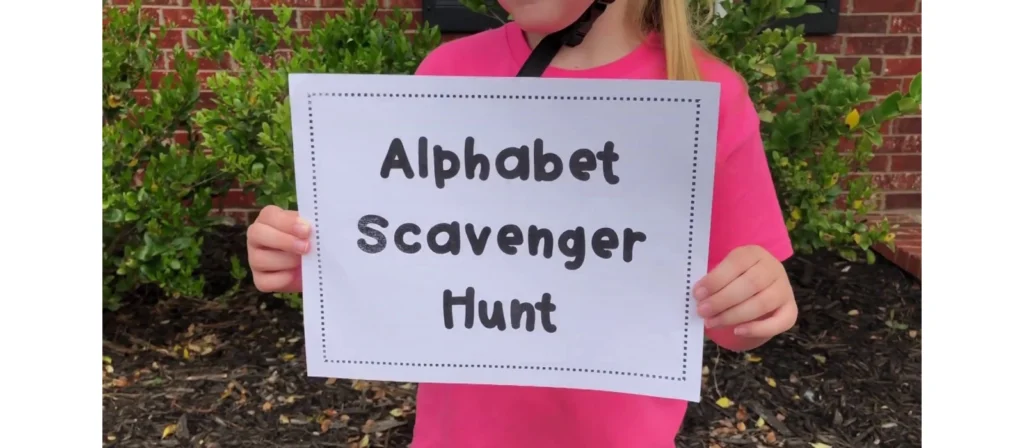
6. Alphabet Scavenger Hunt
A literacy-rich adventure that gets kids moving and searching for letters in the world around them.
- Ages: 4–6
- Materials: Alphabet flashcards, clipboards, paper, crayons, nature items (leaves, sticks, rocks)
- Steps:
- Hide alphabet flashcards around the outdoor space.
- Ask children to find and match items in nature that begin with each letter they find.
- Record findings by drawing or writing them down.
- Why It Works: Supports letter recognition, vocabulary expansion, phonics, and observational skills in a hands-on way.
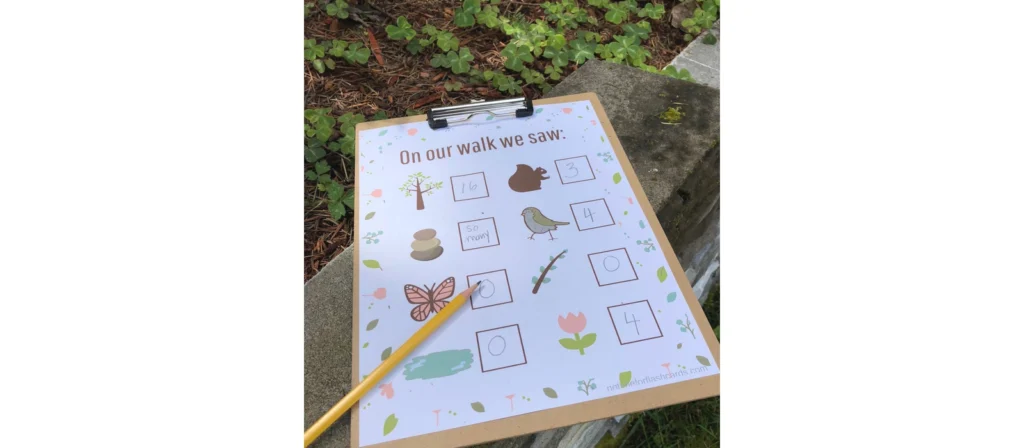
7. Nature Walk with Counting
Turn a simple walk into a math-learning opportunity by counting, comparing, and categorizing.
- Ages: 3–5
- Materials: Baskets or bags, paper tally sheets, pencils or crayons
- Steps:
- Take children on a nature walk and instruct them to collect specific items (e.g., 5 leaves, 3 sticks, 2 pebbles).
- Count collected items together and sort by type or size.
- Create simple bar charts or visual groupings afterward.
- Why It Works: Reinforces counting, one-to-one correspondence, early data analysis, and categorization.
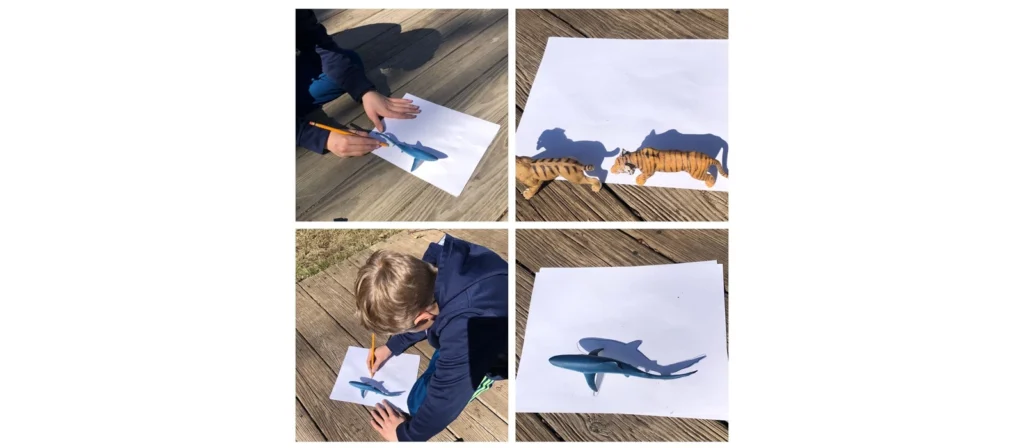
8. Shadow Tracing with the Sun
An outdoor science and art fusion activity that helps children understand how light and time work.
- Ages: 4–6
- Materials: Sidewalk chalk, toys or action figures, paper, crayons
- Steps:
- Place toys upright on the ground and trace their shadows with chalk.
- Return every 30–60 minutes and trace again to observe changes.
- Draw comparisons on paper or recreate in a storybook.
- Why It Works: Builds early science inquiry, understanding of sunlight and time, and observational skills.

9. DIY Outdoor Story Circle
An imaginative literacy activity that encourages storytelling and language development in a nature-rich setting.
- Ages: 3–6
- Materials: Tree stumps or cushions, books, puppets or story stones
- Steps:
- Arrange natural seating in a circle outside.
- Read a story aloud, then prompt children to retell it or create a new version.
- Use props like puppets, stones with drawings, or found nature items for storytelling.
- Why It Works: Supports narrative development, listening comprehension, and expressive language.
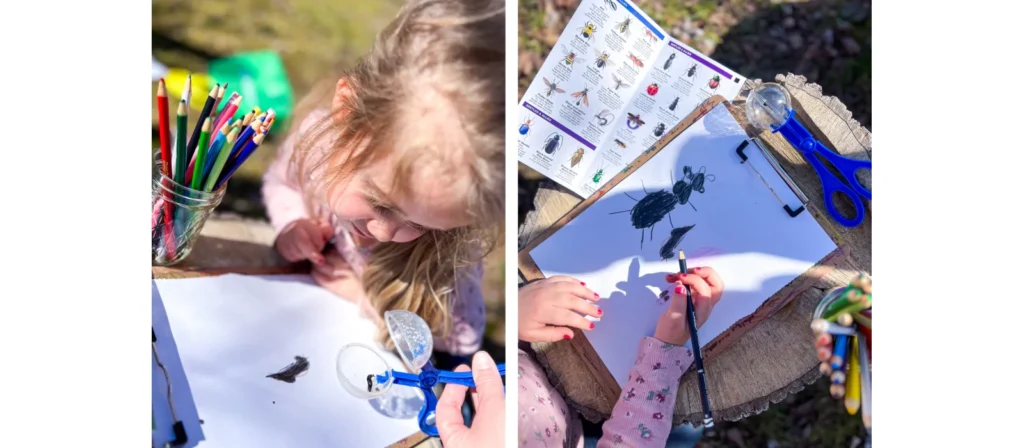
10. Bug Observation and Journaling
A science-based activity that nurtures curiosity and attention to detail.
- Ages: 4–6
- Materials: Magnifying glasses, bug boxes, notebooks, pencils or crayons
- Steps:
- Let children observe insects in grass or garden beds.
- Encourage gentle capture for closer observation (always return them).
- Record observations through drawing or simple note-taking.
- Why It Works: Fosters scientific inquiry, empathy toward living things, and visual documentation skills
🌦️ Seasonal Outdoor Activities for Preschoolers
🌸 Spring
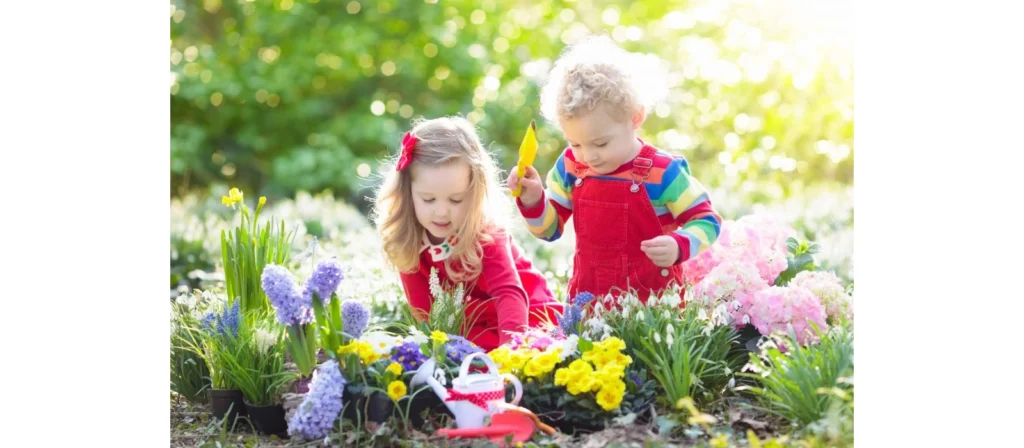
11. Planting Mini Flowers in Garden Beds
Let children get their hands dirty and connect with nature through gardening.
- Ages: 3–6
- Materials: Flower pots or garden beds, soil, child-safe trowels, flower seedlings or seeds, watering cans
- Steps:
- Guide children in filling pots or digging small holes in raised beds.
- Help them plant seedlings and gently pat down the soil.
- Water the plants and talk about plant growth and care.
- Why It Works: Encourages responsibility, introduces life cycles, and builds sensory and fine motor skills.
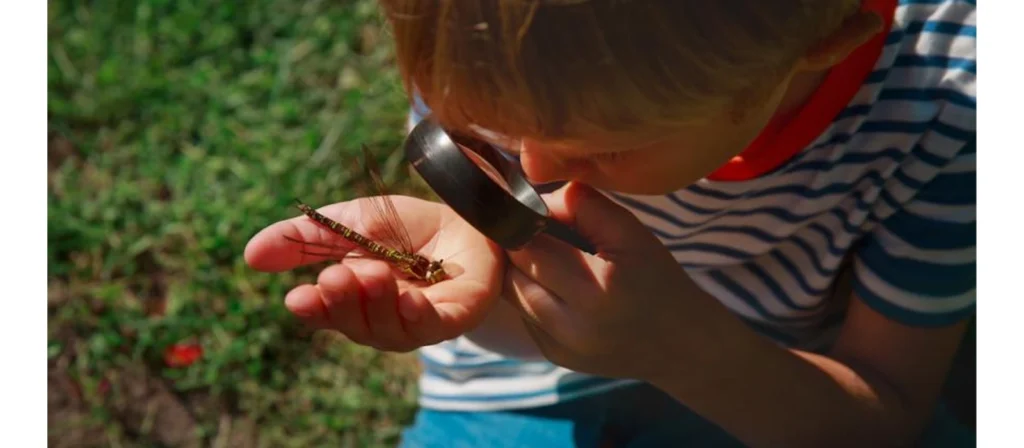
12. Worm Hunt with Magnifying Glasses
A mini science expedition for young explorers.
- Ages: 3–5
- Materials: Trowels, magnifying glasses, containers for observation (optional), wet soil areas
- Steps:
- After a rain or in damp soil, guide children to dig carefully and look for worms.
- Use magnifying glasses to observe worm movement and shape.
- Return worms gently and discuss their importance to soil.
- Why It Works: Builds empathy for living things, supports early biology understanding, and strengthens observation skills.

13. Rain Puddle Jumping with Safety Boots
A joy-filled gross motor activity that turns rainy days into adventure time.
- Ages: 3–6
- Materials: Rain boots, waterproof jackets, supervision
- Steps:
- Choose a safe outdoor space with shallow puddles.
- Let children stomp, jump, and splash freely.
- Add challenges like jumping over or through puddles of different sizes.
- Why It Works: Develops coordination, balance, and body awareness. It also removes the stigma of “bad weather.”
☀️ Summer
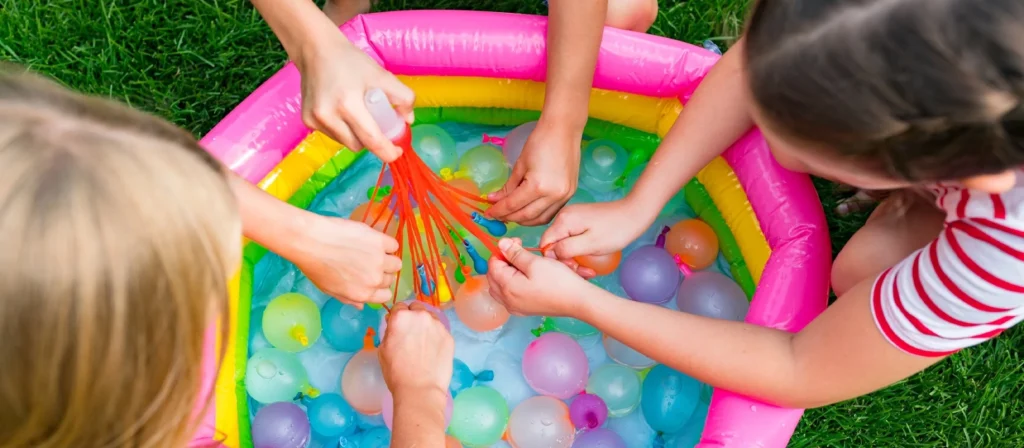
14. Water Balloon Toss
A summer favorite that brings excitement, laughter, and plenty of motion to your preschool playground.
- Ages: 4–6
- Materials: Pre-filled water balloons, plastic tubs, cones or lines for distance
- Steps:
- Pair up children and provide each pair with one water balloon.
- Have them stand close together and gently toss the balloon back and forth.
- With each successful catch, they take one step backward.
- Why It Works: This outdoor preschool activity improves hand-eye coordination, team cooperation, and motor planning—plus, it helps keep kids cool in hot weather.
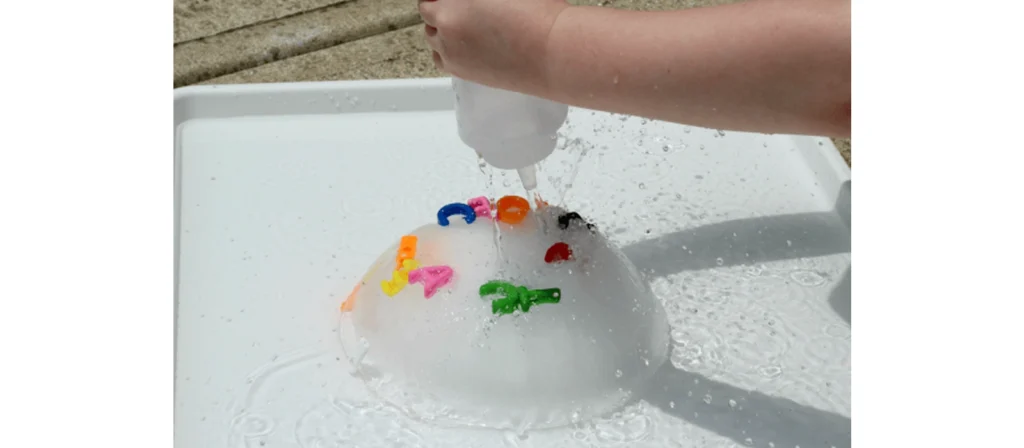
15. Ice Excavation
This sensory-rich activity adds a dash of science to summer playtime.
- Ages: 3–5
- Materials: Plastic toys frozen in ice blocks (use muffin trays), salt, warm water, droppers, and scoops
- Steps:
- Freeze small toys in ice overnight.
- Let children use droppers of warm water and salt to melt the ice and extract the toys.
- Encourage predictions about what will melt faster and why.
- Why It Works: Promotes fine motor skills, patience, early STEM learning, and sensory engagement—all through hands-on outdoor preschool activities.

16. Outdoor Painting with Frozen Brushes
Cool down creative time with a twist by using ice and frozen paint.
- Ages: 3–6
- Materials: Popsicle molds, tempera paint, craft sticks, paper, easels or flat outdoor surfaces
- Steps:
- Fill molds with diluted tempera paint and insert sticks. Freeze overnight.
- Distribute frozen paint sticks and let children create on large sheets of paper outdoors.
- Observe how color and texture change as the ice melts.
- Why It Works: This outdoor activity builds sensory awareness, supports artistic expression, and strengthens grasp and wrist movement while being wonderfully messy and fun.
🍂 Autumn
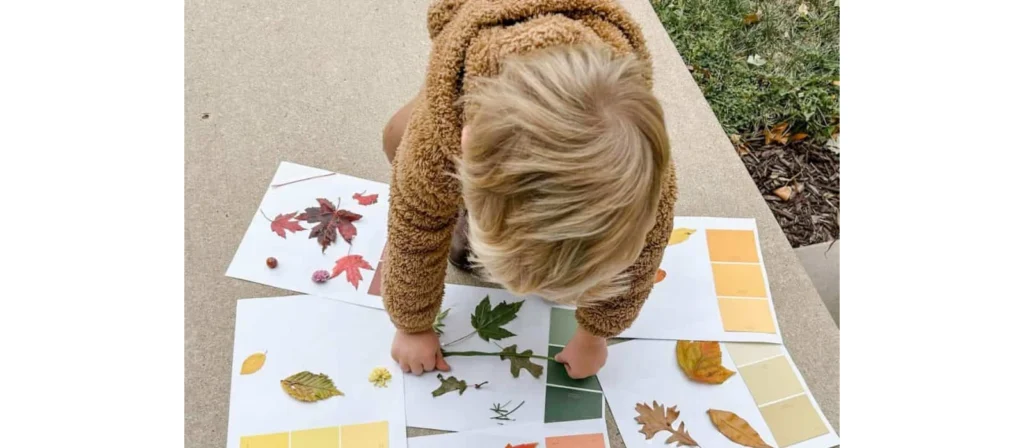
17. Leaf Color Matching Scavenger Hunt
This fall-themed outdoor preschool activity turns leaf collecting into a color-learning game.
- Ages: 3–5
- Materials: Leaf color cards (printable), paper bags or baskets, glue, paper
- Steps:
- Give children a set of leaf color cards (e.g., red, yellow, brown, orange).
- Let them collect matching leaves from around the playground or garden.
- Create a leaf collage or color-sorted chart afterward.
- Why It Works: Strengthens color recognition, encourages observation, and supports sorting—key skills in early childhood development.

18. Acorn Relay Race
An energetic gross motor game using natural materials found in autumn.
- Ages: 4–6
- Materials: Acorns (or small pinecones), spoons, buckets, cones for start/finish lines
- Steps:
- Set up a course where children must carry an acorn on a spoon across a short distance.
- Drop the acorn into a collection bucket and return for another.
- Turn it into a team relay or solo challenge.
- Why It Works: Builds balance, concentration, and cooperative play in an autumn-themed setting.
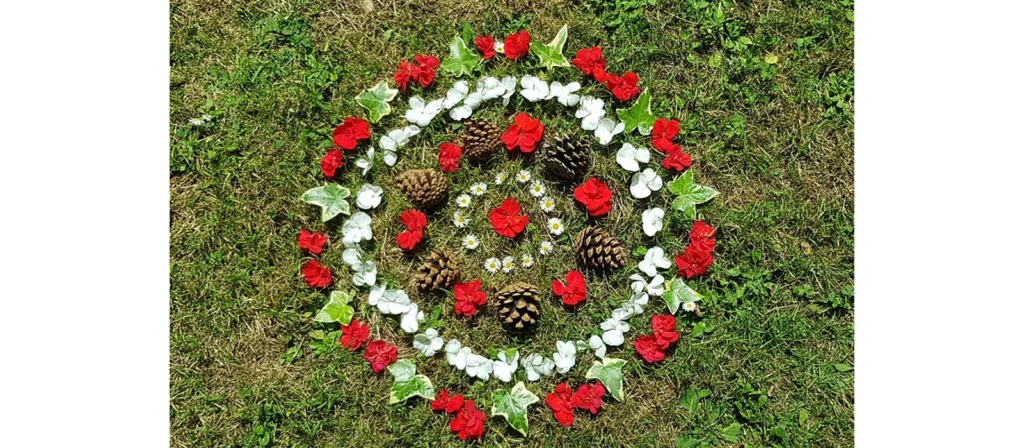
19. Nature Mandala Making
A calming and creative outdoor preschool activity that blends mindfulness with nature.
- Ages: 3–6
- Materials: Fallen leaves, pinecones, sticks, seeds, stones, a clear patch of ground
- Steps:
- Invite children to gather seasonal natural materials.
- Demonstrate how to build a circular pattern (mandala) starting from the center.
- Let children work alone or in groups to create symmetrical art.
- Why It Works: Supports pattern recognition, symmetry, mindfulness, and fine motor control—all through outdoor preschool activities rooted in seasonal learning.
❄️ Winter
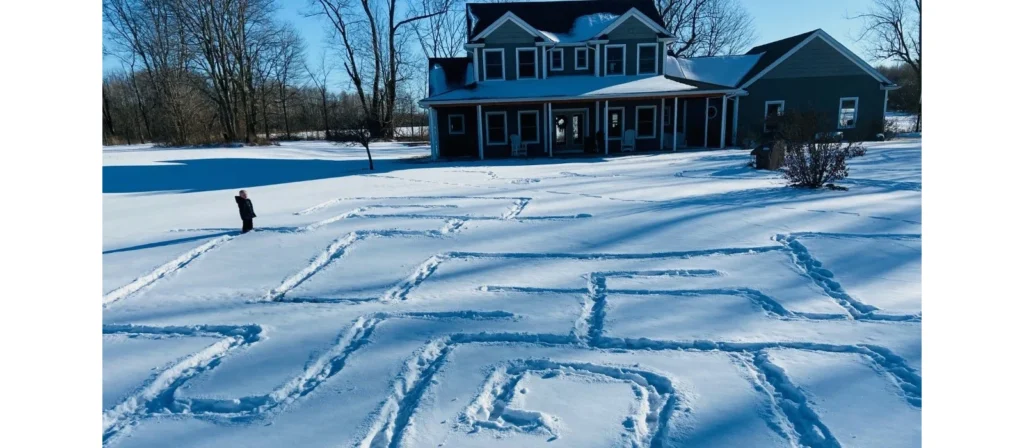
20. Snow Maze Adventure
A thrilling way to keep kids moving and problem-solving, even on snowy days. This winter outdoor preschool activity blends motor development with creative thinking.
- Ages: 4–6
- Materials: Shovels or footpaths in fresh snow, cones or flags for marking, optional stop signs or challenges
- Steps:
- Create a winding maze in the snow using shovels or by simply walking paths.
- Add signs or winter-themed characters along the way for storytelling.
- Let children explore and solve how to get to the center or “rescue point.”
- Why It Works: Enhances gross motor skills, spatial awareness, and navigation while offering immersive outdoor preschool activity in winter.
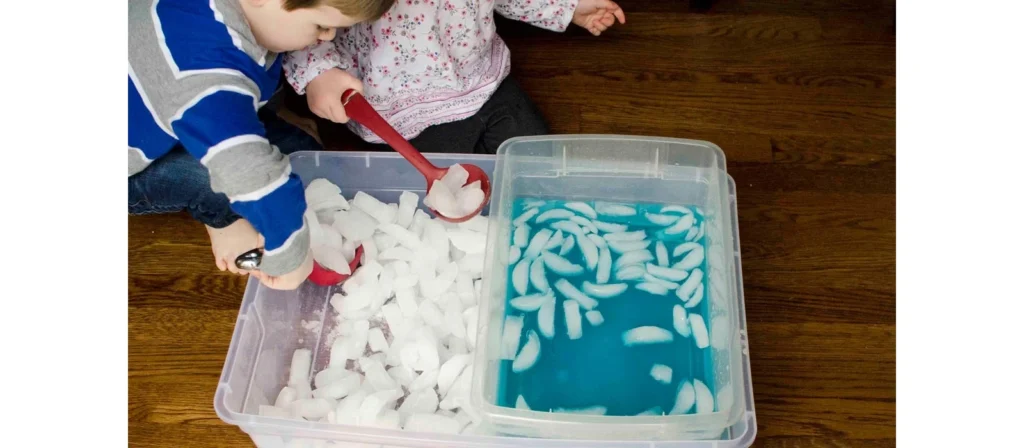
21. Ice Cube Transfer with Spoons
This cold-weather variation of relay games develops coordination, balance, and focus.
- Ages: 3–5
- Materials: Ice cubes, large spoons, plastic bowls or buckets
- Steps:
- Line up children and provide each with a spoon and a bowl of ice cubes.
- They must transfer cubes to a second container across the playground using only their spoon.
- Add a timer or music to make it more engaging.
- Why It Works: Promotes hand-eye coordination and focus while adding winter fun to your outdoor preschool activities routine.
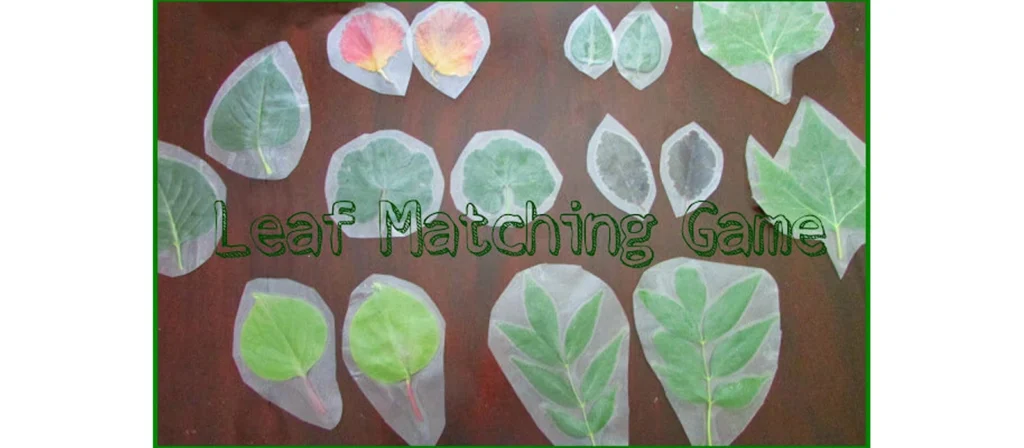
22. Frozen Leaf Matching Game
Combining nature play and sensory learning, this outdoor preschool activity uses frozen materials to reinforce matching and memory skills.
- Ages: 3–6
- Materials: Assorted leaves, shallow containers, water, freezer, trays
- Steps:
- Place leaves in shallow containers filled with water and freeze overnight.
- Pop out the frozen leaf discs and mix them up on trays outdoors.
- Challenge children to match leaf pairs or types before they melt.
- Why It Works: Encourages observation, sensory processing, and classification—all vital parts of early learning through outdoor preschool activities.
Tips for Teachers and Kindergarten Owners
Outdoor Furniture That Supports Learning
When planning outdoor preschool activities, having the right furniture can significantly elevate both safety and learning outcomes. Outdoor furniture isn’t just about benches or picnic tables—it’s about creating intentional spaces that promote engagement, creativity, and exploration.
Durable, child-sized outdoor tables allow for hands-on science experiments, messy art projects, or snack breaks in the fresh air. Modular seating like logs, stumps, or stackable chairs encourage flexible group activities and inclusive circle times. Shade structures such as canopies or pergolas not only protect children from UV exposure but also create cozy “classroom” zones where outdoor learning thrives.
At XIHA Furniture, we recommend selecting weatherproof, easy-to-clean materials like HDPE plastic, treated wood, or powder-coated steel to ensure your investment lasts through every season. Prioritize rounded corners and anti-slip surfaces to support safe and inclusive outdoor preschool activities.
Smartly designed outdoor furniture doesn’t just support physical comfort—it enhances curriculum delivery and gives children the structure they need to focus and participate meaningfully in their environment.
Portable Storage and Material Setup
Efficient organization is a game changer when it comes to outdoor preschool activities. Without easy access to materials, even the best-planned outdoor sessions can fall flat. That’s why portable storage is not a luxury—it’s a necessity.
Rolling carts with weather-resistant bins allow you to transport supplies like art materials, magnifying glasses, balls, or storytime props from indoor to outdoor learning zones effortlessly. Mobile shelving with labeled compartments helps staff quickly set up and pack down activity areas. Look for carts with lockable wheels for added safety on uneven surfaces.
Having grab-and-go outdoor activity kits prepared by theme (e.g., gross motor, nature science, literacy) can save teachers prep time while promoting variety. Simple additions like waterproof tablecloths, collapsible shade tents, and portable easels extend the functionality of any space.
At XIHA Furniture, we help educators plan outdoor environments that are not only stimulating but also highly functional. We offer modular and mobile storage solutions tailored to the unpredictable demands of outdoor preschool environments—because organization is the secret weapon behind every successful outdoor activity program.
Conclusion
Outdoor preschool activities aren’t just fun—they’re foundational. From enhancing gross motor skills to supporting emotional resilience and early academic learning, these experiences give children a well-rounded head start in life. As educators and kindergarten owners, investing in outdoor learning means investing in the whole child.
By creating structured, engaging, and safe outdoor environments—with the right equipment, storage solutions, and seasonal planning—you make space for children to grow, connect, and thrive. At XIHA Furniture, we’re proud to support preschools around the world with everything they need to bring outdoor learning to life.
Whether you’re introducing your first nature walk or revamping an entire outdoor play zone, the key is consistency and intentionality. The benefits of outdoor preschool activities multiply over time—physically, emotionally, socially, and academically.
Let the world outside be your classroom. The children are ready.—physical, emotional, and cognitive. When paired with thoughtful planning and the right tools, they help children grow beyond the classroom walls.

